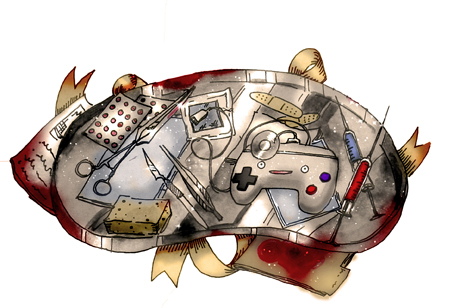Sophisticated Microsoft Kinect can inspire students to find new uses for game consoles

By Salim Zymet
Jan. 23, 2011 11:36 p.m.
Flailing arms, sweaty bodies and shattered TV screens aside, motion-sensor video game consoles have revolutionized our culture in and out of the gaming world.
The latest revolution comes in the form of Microsoft’s Kinect.
With its sophisticated camera, voice, facial and gesture recognition, the Kinect allows your body to become the controller in a 3-D space.
With this advanced technology, it’s no surprise that graduate students at the University of Washington have found a way to incorporate the console into robotic surgeries.
It’s exciting to see this sort of progress being made at a fellow research university, and I don’t doubt that UCLA and other schools will soon follow suit.
The group of graduate students at UW said that using the Kinect saved them roughly $50,000, which would have been spent on a similar system.
In a budget-strapped University of California, it’s time that students lead the way in thinking outside the box when it comes to cheaper, but still efficient, ways to do research.
As a world-renowned leader in research, technology and innovation, UCLA shouldn’t just be following the trail blazed by UW.
If anything, it should encourage faculty and students to be at the forefront when it comes to research.
And just like at the University of Washington, students are the ones we should look to for guidance.
I’m not certain how much a professor knows about video gaming, but I’m sure plenty of students have a good grasp on it.
Microsoft has a long way to go to catch Nintendo’s 67 million Wiis sold, but thanks to hackers, the Kinect seems to be poised to do just that.
While official games for Microsoft’s Kinect are as childish and Wii-like as petting virtual animals and playing dumbed-down versions of our favorite sports, hackers and modders were the first to realize the Kinect’s true potential: to control robots and robotic surgery.
Students at UCLA should be able to utilize the Microsoft console in equally impressive ways.
Design | Media Arts students should pay attention to the various ways in which Kinect can be used to render the human body’s various unique motions.
The Kinect allows surgeons to experience force feedback when they run into anything solid, effectively lowering the chances of error in robotic surgery.
The engineers at the University of Washington used the Kinect’s camera, which can measure depth in a 3-D space, to effectively create “force fields” around areas where robotic surgeons should not venture, such as a liver, thus creating the force feedback.
Not every hack for the Kinect will save lives, but some are just as profound.
In one tech video found on YouTube, a man can be seen standing in front of a Kinect attached to a mini-robot.
The man moves from side to side. So does the robot. He stretches his arms in the air. So, too, does the robot. Finally, he stands on one leg while waving his arms in the air. Again, the robot mirrors his actions.
The video is a must-watch, and the potential outcomes of such technology are tremendous.
The idea behind the Kinect essentially allows for true one-to-one movement with a virtual, or in this case, physical, avatar.
Whether it’s a futuristic robot fighting league, some remote-controlled robotic soldiers or simply an amusing diversion, the fact that the Kinect has inspired the hacking community to create such marvels speaks to the power of new technology.
Hackers have also used the technology to put 3-D, animated versions of themselves in games, to throw fireballs in “Street Fighter” and to play “Angry Birds” with just their arms.
Originally created to compete with Nintendo’s Wii, Microsoft envisioned the Kinect becoming the center of the living room, fun for all ages and maybe, just maybe, attracting a couple of female gamers.
Instead, the Kinect has redefined what a consumer electronic device is.
It controls robots. It makes you look like a fool dancing in front of your television.
And it helps aid surgeons performing remote surgeries.
As an onlooker, I can’t wait to see what hackers, perhaps at UCLA, come up with next.
Think video games belong in the dorms? E-mail Zymet at [email protected]. Send general comments to
[email protected].


